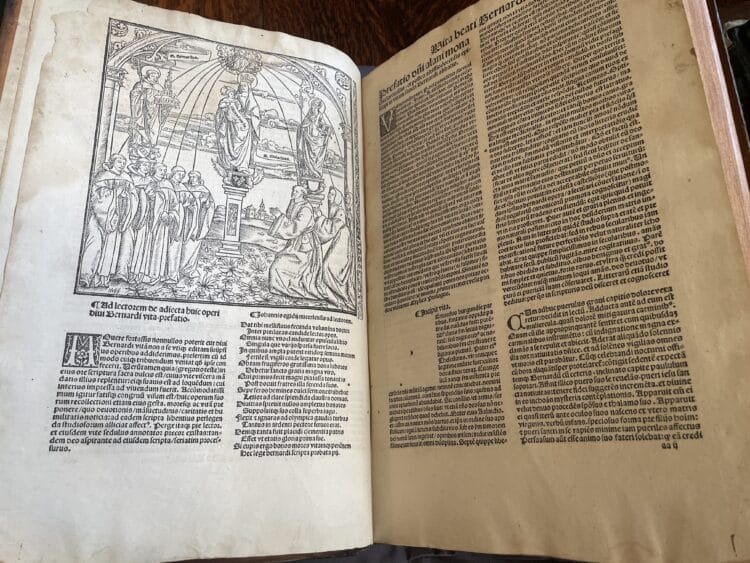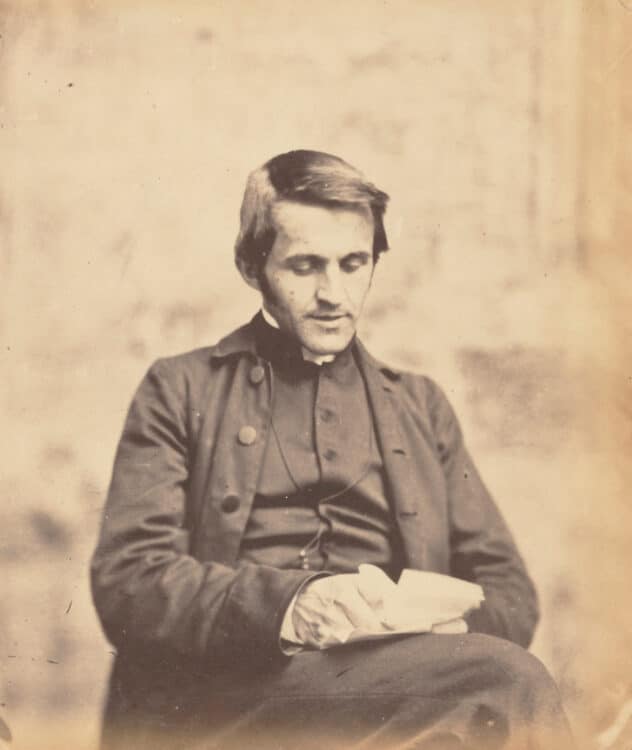Ceri Richards: Supper at Emmaus
27 Feb 2019|Jonathan Yates
- Library, Arts & Archives
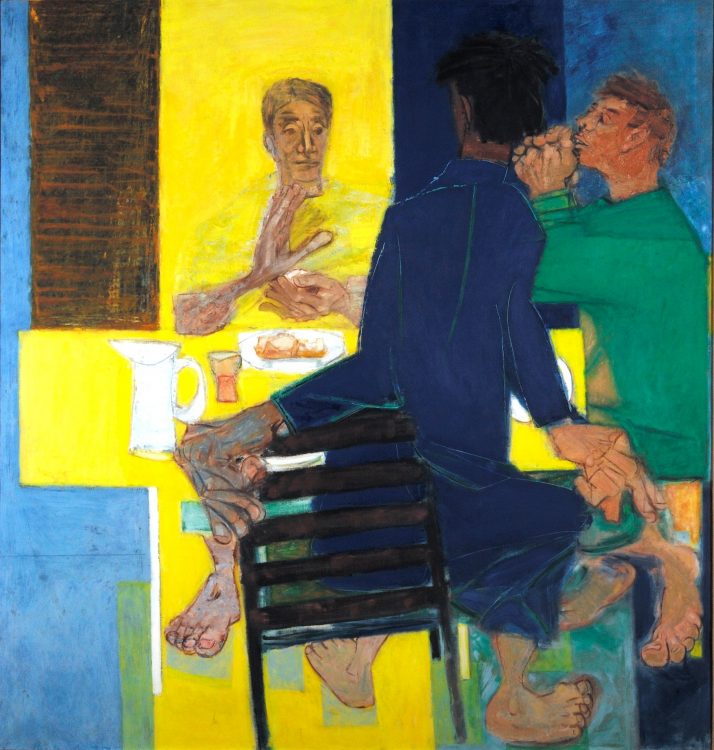
When St Edmund Hall became a full college of the University in 1957, the student-run Picture Committee decided to mark this event by commissioning an altarpiece for the chapel. The Chaplain, John Cowdrey, proposed that the subject should be The Supper at Emmaus – the event in Luke’s Gospel in which, after the Crucifixion, Christ appears to two of the disciples in the village of Emmaus. The Picture Committee wrote to selected artists, inviting them to submit sketches for an altarpiece design. The terms of the competition were that submitted sketches would be kept by the Hall at a fee of £15, and that the chosen artist would be paid £300 for the finished altarpiece.
The Fellows favoured Stanley Spencer, but it became clear that his fee was greater than the funds available. John Craxton and John Piper declined to submit sketches: Craxton ventured that it was not possible to paint a true religious painting in the modern era but offered to paint a large painting covering the whole east wall with “a rather abstract landscape with the symbols of Christianity in it”. Piper did not like the terms of the commission, stating that “to complete a sketch it is necessary to complete the whole work in one’s mind”. Roy de Maistre, Louis James, Theyre Lee-Elliott and Ceri Richards all submitted sketches. Of these only de Maistre had a reputation as a painter of religious pictures. Ceri Richards’ submission is shown below. Sadly, none of the other sketches are still in our collection – but de Maistre worked up his sketch into a finished work now in the Methodist Art Collection.

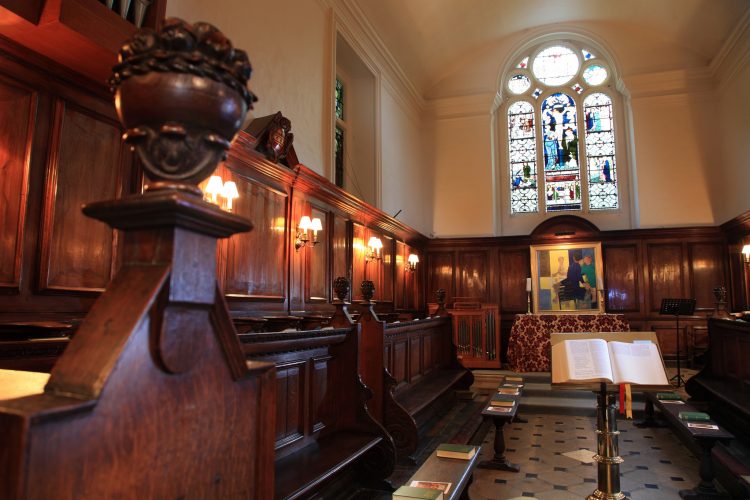
After deliberation, Ceri Richards was invited to undertake the commission. His submitted sketch has all the compositional elements of the final work. However, the Bursar, Reggie Alton felt that the colours were not bold enough for the chapel setting. On visiting, the artist agreed. Much bolder colours can be seen in a gouache study now in the Methodist Art Collection. The burnished gold frame was specially designed by the artist and the well-known frame maker Alfred Hecht.
The scene depicted, the Supper at Emmaus, is described in Luke 24:30-31 as follows:
“And it came to pass, as he sat at meat with them, he took bread, and blessed it, and brake, and gave to them. And their eyes were opened, and they knew him; and he vanished out of their sight.”
Christ is seated at a yellow table; together with the light streaming through the window behind this forms a cruciform shape. Three days earlier Christ was crucified on the cross – the marks still visible on his hands and feet. The two disciples had been walking to the village of Emmaus when they were joined by someone they did not recognise. They spoke with him about recent events, and on arriving at their destination invited him to eat with them. The painting captures the moment when the disciples recognise the stranger before them as Christ. One reacts quickly, rising and pushing his chair back in surprise – the other is slower to comprehend. Already Christ is merging with the light behind and will soon vanish from them.
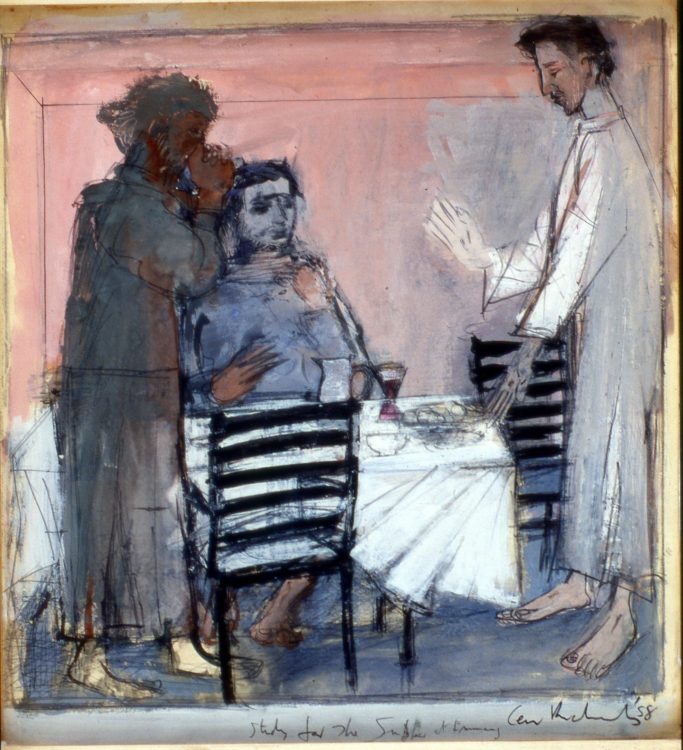
Over the centuries many artists have painted The Supper at Emmaus. I have been fortunate to see a number including Titian in the Walter Art Gallery, Liverpool; Rembrandt in The Louvre, Paris; and the very impressive Caravaggio in the National Gallery, London. I think that Ceri Richards’ work stands with these. It is a powerful painting, and if you are so minded is also a great religious painting. It is also remarkable for being a student-led commission: a real demonstration of the lasting influence a group of students can have on our community.
There is one extra detail in this story – something that has only come to light very recently. The sketch shown above was not Ceri Richards’ first attempt – there was an earlier design which was not pursued. I have this image preserved on an old 35mm slide. This gives a fascinating insight into development of the painting, from initial conception to the final painting. Sadly, while the College must have once owned this sketch, I currently have no record of it – any information gratefully received!
Read more on our blog
Category: Library, Arts & Archives
Author

Jonathan
Yates
Professor Jonathan Yates is a tutor in Materials Science at St Edmund Hall. He also holds the role of Picture and Chattels Fellow which sees him take responsibility for the cataloguing, conservation and use of the Hall’s art collection, including paintings, photographs, silver and other items.
